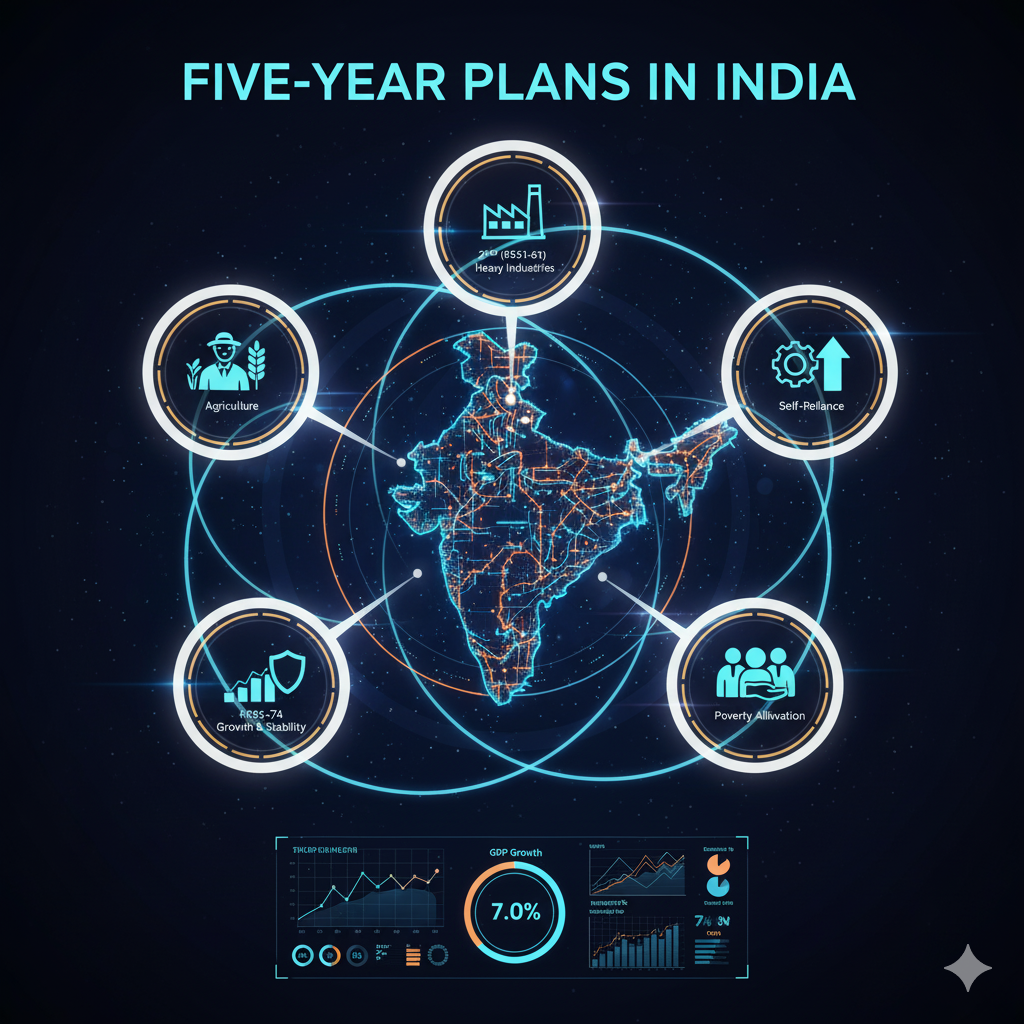Introduction
The PM Gati Shakti Yojana, launched in October 2021 by the Government of India, represents a transformative national master plan for multimodal connectivity. Designed to break departmental silos and synchronize infrastructure development across various sectors, the scheme is expected to boost economic productivity and reduce logistical costs. For a state like Uttar Pradesh (UP)—India’s most populous state with strategic geographical location—this initiative holds massive potential in revolutionizing its transportation and logistics ecosystem.
As Uttar Pradesh strives to become a trillion-dollar economy, leveraging the Gati Shakti Yojana becomes essential in achieving integrated infrastructure, decongesting traffic nodes, improving supply chain efficiency, and enhancing connectivity across urban and rural areas.
Overview of PM Gati Shakti Yojana
The PM Gati Shakti National Master Plan is a digital platform bringing together 16 ministries, including railways, roads, shipping, aviation, and power, to ensure coordinated infrastructure development. Key features include:
- GIS-based planning tool
- Unified logistics interface platform (ULIP)
- Institutional framework for planning and execution
- Real-time data sharing between ministries
- Focus on reducing logistical costs and improving last-mile connectivity
By 2024-25, the government targets expanding expressways, industrial corridors, railway networks, and multimodal logistics parks.
Transportation and Logistics in Uttar Pradesh: A Background
Uttar Pradesh plays a crucial role in India’s transportation and trade. It shares borders with nine Indian states and Nepal, and serves as a link between northern and eastern India. Key features include:
- Network of 14 national highways, spanning over 8,500 km
- Important railway junctions such as Kanpur, Lucknow, Varanasi, and Prayagraj
- Busiest cargo routes via road and rail
- Inland waterways development through National Waterway-1 (Haldia-Varanasi stretch)
- Upcoming airports and logistics parks in Jewar, Kushinagar, and Gorakhpur
Despite this strategic position, UP’s logistics sector has historically suffered from high costs, fragmented systems, bottlenecks at intermodal points, and poor last-mile connectivity.
Key Impacts of PM Gati Shakti Yojana in Uttar Pradesh
1. Integrated Infrastructure Planning
PM Gati Shakti brings together road, rail, waterway, and air connectivity on a single planning platform. This integration is already visible in UP through projects like:
- Eastern and Western Dedicated Freight Corridors (DFC): Enhancing rail connectivity between Dadri (UP) and major ports, promoting industrial growth.
- Multimodal Logistics Park in Varanasi: Built along National Waterway-1 to facilitate cargo movement via inland waterways.
- Road-rail-air linkages in the Yamuna Expressway region: Integration with Jewar International Airport under development.
These projects were previously developed in isolation but are now planned with a holistic view, reducing duplication and improving efficiency.
2. Acceleration of Road and Expressway Projects
Uttar Pradesh has witnessed a surge in expressway development, aligning with Gati Shakti objectives:
- Purvanchal Expressway (Lucknow to Ghazipur)
- Bundelkhand Expressway (Chitrakoot to Etawah)
- Ganga Expressway (Meerut to Prayagraj) under construction
- Gorakhpur Link Expressway, enhancing east-west connectivity
Under the Gati Shakti framework, these expressways are being aligned with economic nodes, logistics parks, industrial zones, and agricultural mandis to boost their economic utility.
3. Strengthening Multimodal Logistics Ecosystem
The logistics sector in UP is being revamped through:
- Multimodal Logistics Parks (MMLPs): Under development in Varanasi and Greater Noida, with rail-road-water integration.
- Warehousing hubs: Identified at Gorakhpur, Agra, Kanpur, and Lucknow to cater to MSMEs and agri-exports.
- Cold chain infrastructure: Especially for perishable goods in eastern UP (potato, mango, and dairy belts).
These developments are part of the PM Gati Shakti’s focus on reducing logistics costs from 13–14% of GDP to under 8%, aligning India with global standards.
4. Boost to Industrial and Economic Zones
The Gati Shakti Yojana links transport infrastructure with industrial corridors and special economic zones (SEZs). In UP:
- UP Defence Industrial Corridor (UPDIC) in Aligarh, Jhansi, Chitrakoot is being connected to highways and rail freight corridors.
- Integrated Manufacturing Clusters planned along the DFC and expressways.
- One District One Product (ODOP) initiatives gain better market access through planned logistics hubs.
This infrastructure-driven growth is poised to create employment, reduce regional disparity, and increase UP’s share in national manufacturing output.
5. Enhancing Urban Mobility and Connectivity
Urban transportation has also benefited under Gati Shakti:
- Metro rail expansion in cities like Kanpur, Agra, Lucknow, and Varanasi
- Bus terminals and intermodal stations being planned with better traffic flow and passenger amenities
- Last-mile connectivity projects including electric buses and smart city transport systems
Such initiatives ensure smoother urban mobility, reduced congestion, and enhanced air quality.
6. Agriculture and Rural Connectivity
Rural logistics plays a pivotal role in UP’s agrarian economy. Gati Shakti aids:
- Linking farms to mandis and markets via rural roads aligned with expressways
- Cold chain and reefer vans for perishables like vegetables, milk, and fruits
- Digital crop transport planning tools integrated with the Gati Shakti digital portal
Improved connectivity empowers farmers, reduces wastage, and promotes food processing and exports.
7. Digital Governance and Real-time Monitoring
One of the game-changing aspects of Gati Shakti is its GIS-based dashboard:
- Real-time project tracking across sectors
- Identification of bottlenecks and quick approvals
- Coordination among departments like PWD, railways, irrigation, forest, etc.
In UP, district authorities and planning bodies now have access to a centralized digital map, enabling more data-driven decision-making.
Case Studies: Gati Shakti in Action in Uttar Pradesh
Case Study 1: Varanasi Multimodal Hub
The Varanasi MMLP along National Waterway-1 exemplifies multimodal integration. Cargo from eastern UP is now being shipped via waterways to Kolkata, reducing transportation time and cost. It is also linked with rail and road corridors under Gati Shakti for seamless flow.
Case Study 2: Jewar Airport and the Western UP Economic Zone
The Jewar Airport project is planned as a logistics and industrial hub under Gati Shakti. Connectivity includes:
- Yamuna Expressway (road)
- Delhi-Varanasi Bullet Train Corridor (rail)
- Dedicated Freight Corridor
- Future connection to Greater Noida Logistics Hub
This holistic development model showcases the Gati Shakti planning approach.
Challenges in Implementation
Despite its benefits, certain challenges remain:
- Land acquisition delays, especially in eastern UP
- Inter-departmental coordination gaps at the state level
- Need for skilled manpower to operate logistics and digital platforms
- Balancing development with environmental concerns, such as expressway construction through sensitive areas
However, the state government is actively working to streamline procedures and adopt capacity-building programs.
Future Prospects and Recommendations
The success of PM Gati Shakti in Uttar Pradesh will depend on continued alignment between central and state agencies, private sector participation, and community engagement.
Recommendations:
- Strengthen state-level Gati Shakti cells for better coordination.
- Promote public-private partnerships (PPPs) in warehousing, logistics parks, and rail sidings.
- Improve skill training in logistics management for youth in UP.
- Incentivize green logistics such as electric trucks and solar-powered warehouses.
- Develop district-level logistics plans integrated with Gati Shakti portal.
Conclusion
The PM Gati Shakti Yojana has emerged as a revolutionary framework to overhaul India’s infrastructure planning and logistics sector. In Uttar Pradesh, the impact is becoming increasingly visible with the rapid development of expressways, multimodal hubs, industrial corridors, and digital planning systems.
By integrating transport networks, boosting connectivity, and reducing costs, Gati Shakti is setting the foundation for Uttar Pradesh to become an economic powerhouse with world-class logistics infrastructure. For a state with vast human capital, fertile land, and strategic geography, this initiative could be the key to inclusive growth and long-term prosperity.
Summary Points
Future prospects include green logistics, PPPs, and district-level planning under the Gati Shakti framework.
PM Gati Shakti Yojana aims at integrated infrastructure planning across sectors.
Uttar Pradesh benefits through expressways, MMLPs, and industrial corridor linkages.
Improved logistics is leading to reduced cost, faster movement, and better rural-urban connectivity.
Varanasi and Jewar are key nodes of multimodal transformation.
Challenges remain in land acquisition and capacity building but are being addressed.




